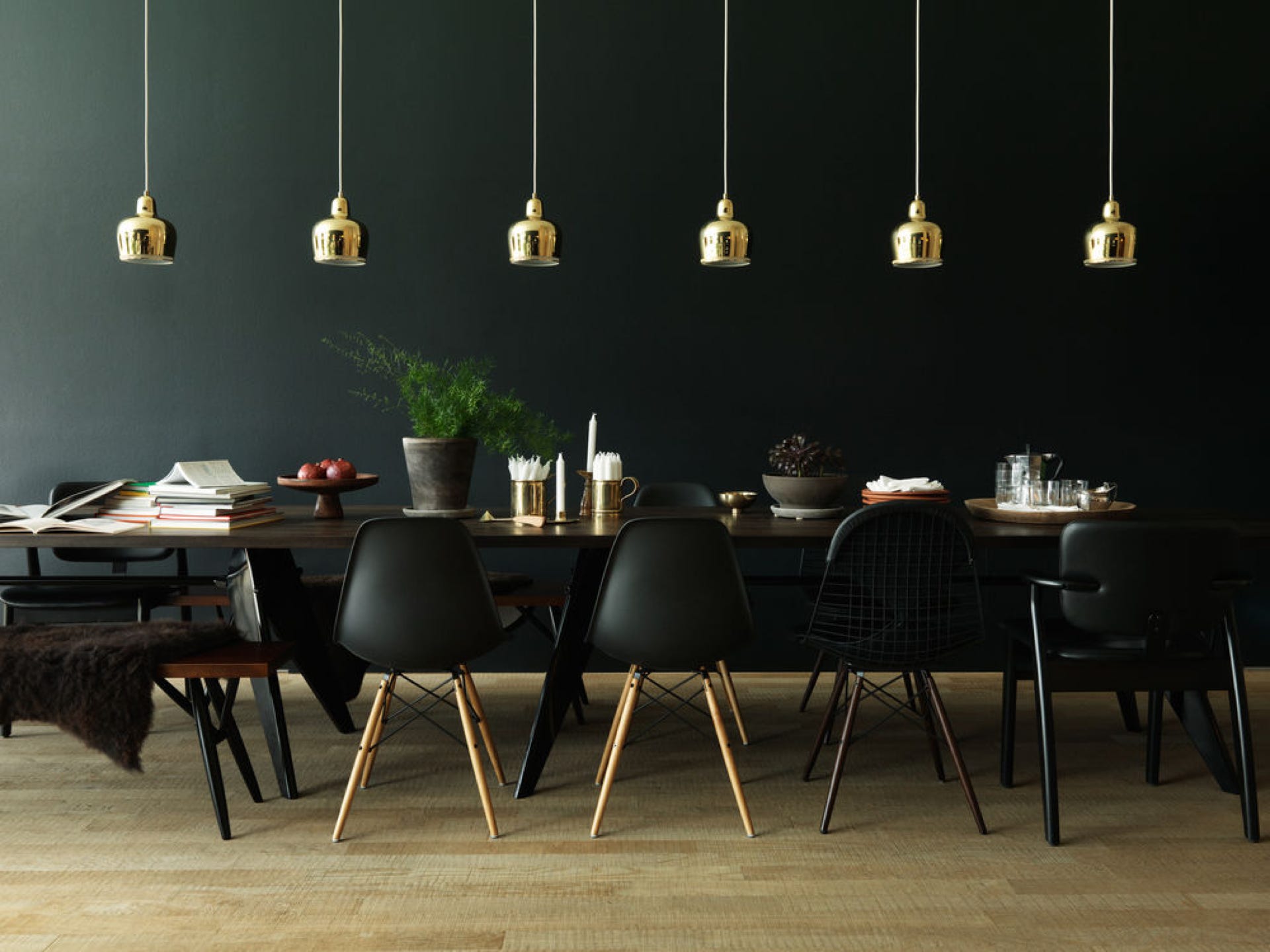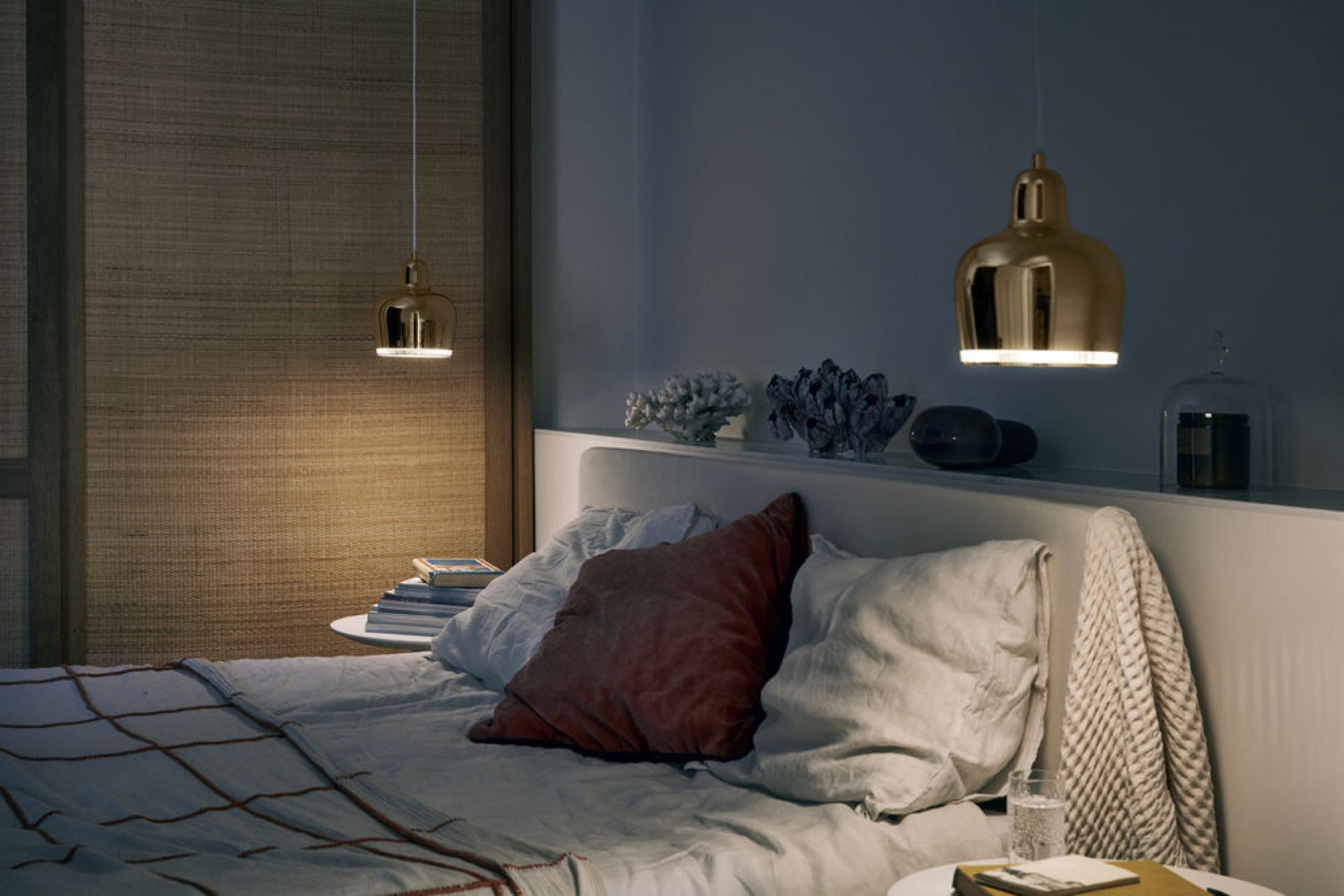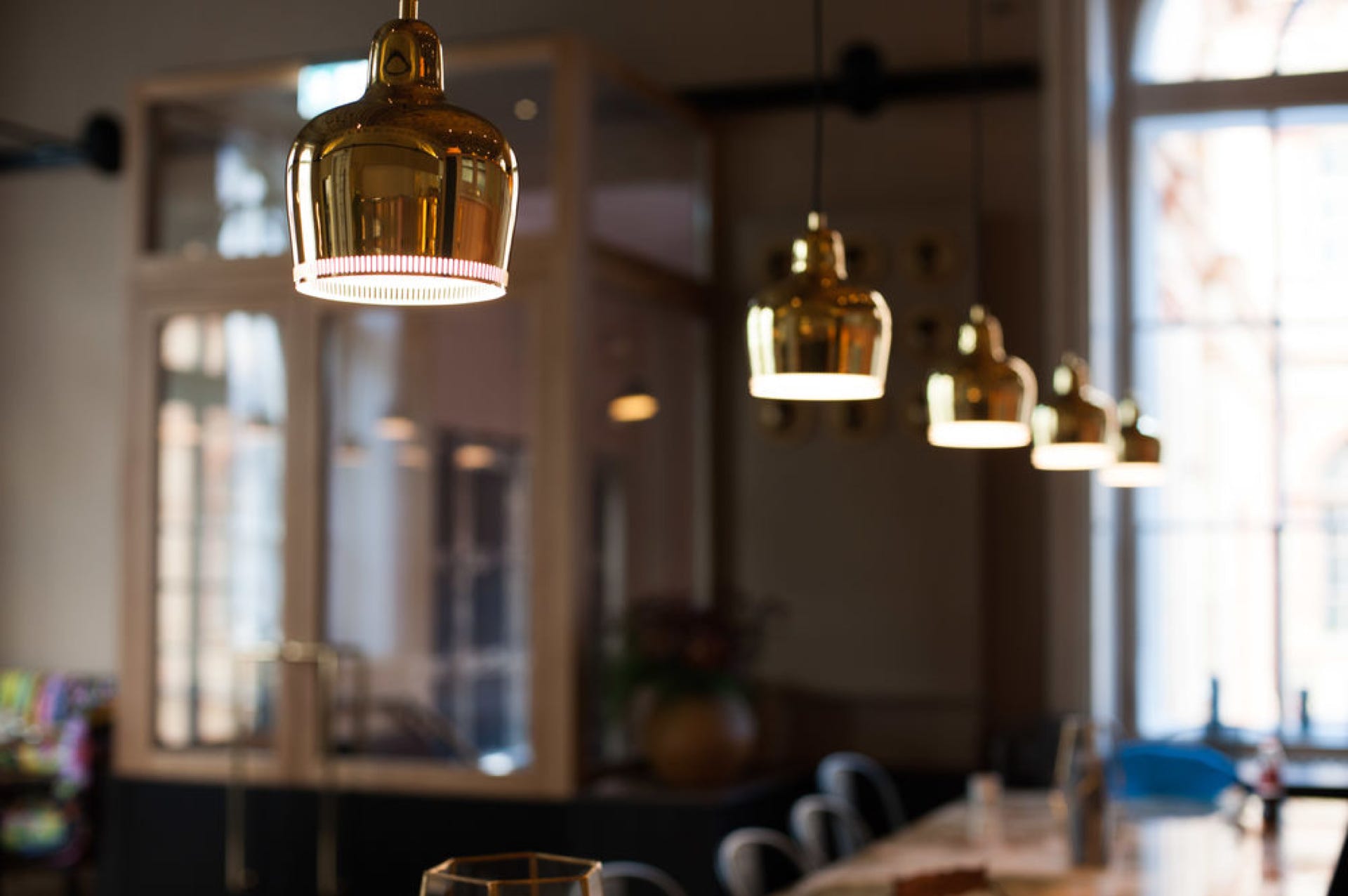15% off with DESIGN15
Aino and Alvar Aalto were commissioned in 1936 to design the interior of the Savoy Restaurant in Helsinki. Made from a single piece of brass, the elegant A330S Pendant light was a part of the restaurant’s interior. It was shown in the Finnish Pavilion of the Paris World Expo in 1937.

Nicknamed “Golden Bell”, A330S has a sculptural quality that can be appreciated whether the light is switched on or off. Casting golden reflections, the perforated rim of Pendant Light A330S creates a memorable halo effect and prevents glare.
Made from a single piece of brass or steel, the elegant “Golden Bell” embodies Alvar Aalto’s signature streamlined aesthetic, while the light it provides is both warm-toned and characteristically diffuse.

Dimensions H20 x Ø17 cm
Cable 250 cm
Light source E27
A330S Pendant – Coated brass / white inside
A330S Pendant – white
A330S Pendant – chrome
A330S Pendant – black
Made from a single piece of brass, with an uncoated exterior surface, the Savoy A330S will age gracefully over time. Natural oxidation starts right after production, beginning an aging process that will result in a beautiful patina.
The Savoy version casts a golden, warm toned light while neutralising glare. With a black textile cord similar to the ones found at The Savoy to this day, this version closely resembles the very first pieces created in the 1930s.
A330S Pendant « Savoy »
Polished unvarnished brass, brass inside
Affixed to a vertical surface via a slender arm, Wall Light Golden Bell can be rotated through 180 degrees allowing for varying intensities of illumination. While the Aaltos produced a small number of wall lights based on the Golden Bell for selected projects, the lights were never widely distributed. Only now is Artek introducing this version of the Wall Light Golden Bell, based on a historical original, in series.
Shade H20 x Ø17 cm Arm 48 cm
Light source E27
A330S – Brass, white inside
A330S Wall lamp – chrome
A330S Wall lamp – white
A330S Wall lamp – black






Alvar Aalto
Hugo Alvar Henrik Aalto (1898-1976) was born in Kuortane, Finland. His father, Johan Henrik Aalto, was a Finnish-speaking land-surveyor and his mother, Selly (Selma) Matilda (née Hackstedt) was a postmistress. When Aalto was 5 years old, the family moved to Alajärvi, and from there to Jyväskylä in Central Finland. Aalto studied at the Jyväskylä Lyceum school, completing his basic education in 1916. In 1916 he then enrolled to study architecture at the Helsinki University of Technology, graduating in 1921.
In 1923 he returned to Jyväskylä, where he opened his first architectural office. Jyväskylä would become a notable city for his architecture, with more buildings designed by him than in any other city. The following year he married architect Aino Marsio. Their honeymoon journey to Italy sealed an intellectual bond with the culture of the Mediterranean region that was to remain important to Aalto for the rest of his life. The Aaltos moved their office to Turku in 1927, and started collaborating with architect Erik Bryggman. The office moved again in 1933 to Helsinki.
The Aaltos designed and built a joint house-office (1935–36) for themselves in Munkkiniemi, Helsinki, but later (1954–56) had a purpose-built office built in the same neighbourhood - the latter building nowadays houses the Alvar Aalto Academy. Aino and Alvar Aalto had 2 children, a daughter Johanna "Hanni" Alanen, born Aalto, 1925, and a son Hamilkar Aalto, 1928. In 1926 the young Aaltos designed and had built a summer cottage in Alajärvi, Villa Flora. Aino Aalto died of cancer in 1949. In 1952 Aalto married architect Elissa Mäkiniemi (died 1994), who had been working as an assistant in his office. In 1952 Aalto designed and had built a summer cottage, the so-called Experimental House, for himself and his new wife in Muuratsalo in Central Finland. Alvar Aalto died on May 11, 1976, in Helsinki.
Aalto's career spans the changes in style from (Nordic Classicism) to purist International Style Modernism to a more personal, synthetic and idiosyncratic Modernism. Aalto's wide field of design activity ranges from the large scale of city planning and architecture to interior design, furniture and glassware design and painting. It has been estimated that during his entire career Aalto designed over 500 individual buildings, approximately 300 of which were built, the vast majority of which are in Finland. He also has a few buildings in the USA, Germany, Italy, and France.
Aalto claimed that his paintings were not made as individual artworks but as part of his process of architectural design, and many of his small-scale "sculptural" experiments with wood led to later larger architectural details and forms. These experiments also led to a number of patents: for example, he invented a new form of laminated bent-plywood furniture in 1932. His experimental method had been influenced by his meetings with various members of the Bauhaus design school, especially László Moholy-Nagy, whom he first met in 1930. Aalto's furniture was exhibited in London in 1935, to great critical acclaim, and to cope with the consumer demand Aalto, together with his wife Aino, Maire Gullichsen and Nils-Gustav Hahl founded the company Artek that same year. Aalto glassware (Aino as well as Alvar) is manufactured by Iittala.
Aalto's 'High Stool' and 'Stool E60' (manufactured by Artek are currently used in Apple stores across the world to serve as seating for customers. Finished in black lacquer, the stools are used to seat customers at the 'Genius Bar' and also in other areas of the store at times when seating is required for a product workshop or special event.
Price Guarantee
Offering design at the right price is an integral part of our work. If you find the same item at a lower price at another retailer, delivery included, we will not only match it, but even offer you a better price.
How to take advantage of it?
We compare our prices every day with all authorized retailers in Europe. If nevertheless you find cheaper, contact us for a counter-proposal.
We must be able to verify that the item is authentic, new, perfectly identical (size, materials, color, etc.)
and that it is not part of a campaign or temporary destocking.
The valid basis is, for example, a current quote or a direct link to another retailer's website where the lower price is indicated. An email image is invalid, the original email must be forwarded.
The offer does not apply to orders already placed and cannot be combined with any of our other offers or promotions.